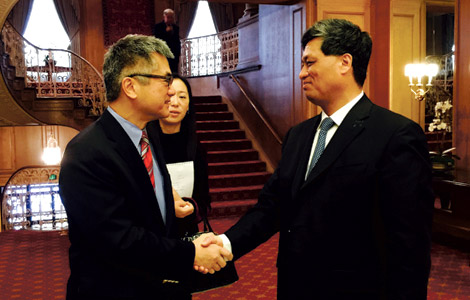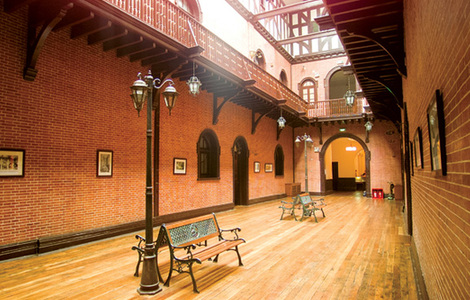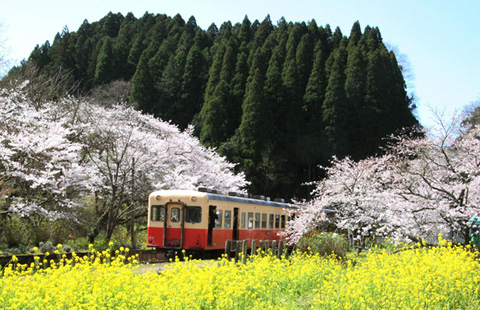Nunnery's business sense a boon in modernizing Tibet
Updated: 2015-04-18 21:01
(Xinhua)
|
||||||||
LHASA -- For evidence of how Tibet is modernizing and prospering, look no further than its religious institutions. Without compromising its Buddhist principles, regional capital Lhasa's Tsanggo Nunnery has incorporated secular practices to survive and prosper.
The teahouse and state-subsidized clinic it runs serve the local community and, along with government funding, create an income stream that has turned the nunnery from a neglected relic into a comfortable religious center and home to 86 nuns.
Its story reflects the point made by the State Council earlier this week, when it released a white paper about Tibet's development and the improved living conditions of Tibetan people.
Tsultrim Lhamo is one of them. The 62-year-old nun is in charge of secular affairs at Tsanggo. "I am a religious person," she says, "but along with other nuns, I am also doing something for secular society, which, as I believe, is a key part of Buddhist doctrine."
When she first arrived at the nunnery, in 1984, she found it in a state of disrepair and crowded with locals who had built shanty dwellings on the premises.
Tsanggo has a proud history. Songtsen Gampo, the king who unified Tibet in the seventh century, once took shelter there and prayed for his people during a flood.
It later fell into tumult, however.
The more than 100 nuns staying in Tsanggo were dismissed during the Cultural Revolution (1966-1976), when religion was seen as superstition.
Reopening in a sorry condition in 1983, it wasn't long before Tsultrim Lhamo was raising funds for renovation. In the following years, residents were moved out and rehoused, and the local government earmarked several million yuan to Tsanggo, which went through eight overhauls in three decades.
The nuns' dormitories are now equipped with TVs, microwaves and air conditioners. Many of the sisters sport trendy trainers and buzz around talking on iPhones.
Life is routine and peaceful. "We have morning tea and breakfast at 8 a.m., before going to chant sutras," Tsultrim Lhamo says.
The nuns hold religious ceremonies on special occasions including Tibetan New Year. They are commonly invited to local weddings and funerals, and chant sutras for donors upon request.
"People face all kinds of trouble in the secular world," Tsultrim Lhamo says. "Our role is to help ease their worries."
That sense of public assistance is also seen in the nunnery's businesses. The clinic has four doctors, and its medicine is much cheaper than elsewhere, thanks to government subsidies. A bottle of fluid for intravenous infusion costs just 30 yuan, a third of the price in hospitals.
The teahouse, known for its steamed buns, can rake in more than 100,000 yuan (about 16,140 U.S. dollars) a year.
Tsanggo's new-found affluence means it is heavily over-subscribed. Women wishing to become nuns there have to pass an entrance exam. Only those who can fluently recite 500 pages of Tibetan Buddhist classics have a chance of being accepted.
In fact, the nunnery has seen a marked shift in the quality and type of candidates it is receiving as Tibetan education has improved. As the white paper noted, 99.6 percent of Tibetan children now go to primary school, compared with less than 2 percent in the 1950s, when 95 percent of the population were illiterate.
While Tsanggo used to generally attract devout women from poor families or those who had suffered setbacks in life, it now welcomes more middle-class and better-educated women.
Nevertheless, they are all still offered education in the nunnery.
Every Monday, Wednesday and Friday, teachers are invited in to give lessons in Tibetan, Mandarin, history and literature. "I was not well educated, but I am learning now," says Tsultrim Lhamo.

 Japanese WWII surrender video debuted at China museum
Japanese WWII surrender video debuted at China museum
 Beijing film festival draws top moviemakers, Oscar winners
Beijing film festival draws top moviemakers, Oscar winners
 Across America over the week (from April 10 to 16)
Across America over the week (from April 10 to 16)
 Historic hotels offer more than a view
Historic hotels offer more than a view
 Top 10 foreign holders of US Treasuries
Top 10 foreign holders of US Treasuries
 Lost in sandstorms
Lost in sandstorms
 New roles for technology: Rise of robots
New roles for technology: Rise of robots
 Strange but true: Getting ahead of the rest
Strange but true: Getting ahead of the rest
Most Viewed
Editor's Picks

|

|

|

|

|

|
Today's Top News
China and the 2016
US election
World Bank, IMF: will work
with AIIB
Ex-PM says US, China can be allies
Hainan Air links San Jose, Beijing
Carrying on a Chinese food legacy
America, Europe told to work with BRICS
Beijing film festival draws top moviemakers, Oscar winners
Chinese teachers mark progress
US Weekly

|

|






